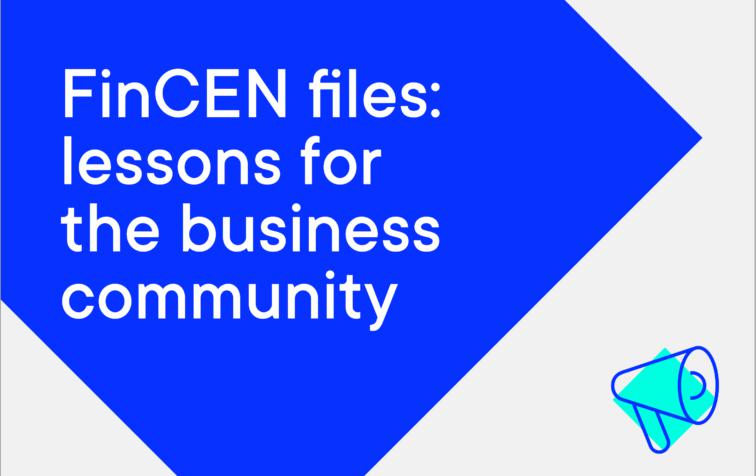In recent years, the international tax advisory profession has come under scrutiny. For the press, politicians and citizens alike, tax advisors’ daily work is increasingly conflated with tax avoidance and even evasion. Meanwhile, the regulation of “potentially aggressive cross-border tax planning” has already been considerably tightened, as evidenced by various laws and regulations such as DAC6, ATAD, BEPS 2.0: Pillar One and Two and FATCA/CRS. In all likelihood, such regulations will only become stricter going forward. No wonder, then, that international tax advisors are doing everything in their power to remain compliant when practising their profession. But these days, compliance does not end with simply respecting the rules of one’s own field. The question is not just how you deal with your clients, but also which clients you choose to work with. Vigilance and care in that area may not be listed in the job description, but is still highly necessary, and new measures must be evolved to stay ahead. So what can technology and AI do for us in this respect?
The burden of compliance
Everyone who ventures into the international business arena today faces the same burden of compliance. First, a set of specific industry rules governs the legal and tax responsibilities of tax professionals. On top of that comes another series of laws and regulations. As part of their efforts to fight crime, money laundering, and terrorism, governments and regulatory bodies are imposing increasingly stringent cross-border requirements. Requirements that tax professionals also have to comply with. Deviating from the regulations for tax advisors entails major risks in terms of business and personal liability, fines, prosecution, reputation damage, and even business continuity. But beyond that, compliance risks loom as a result of Anti Money Laundering, Know Your Customer, and Customer Due Diligence regulations, where non-compliance can have the same far-reaching consequences.
Know all about your customers
What this boils down to is that anyone active in the business arena – including individual tax advisors and the companies they work at – must know everything about their clients. About their financial dealings, their Ultimate Beneficial Owner (UBO), their political relations, goods flows, the purpose of these goods, in fact the entire supply chain. When entering into relationships with clients or third parties, you cannot escape the obligation to conduct in-depth investigations. Not only into their identity, but also the ultimate beneficiaries of their transactions, and the purpose and nature of these transactions. Merely not reporting concerns about suspicious actions in a timely manner can be enough for a hefty penalty.
Screening and continuous monitoring
Screening new business associates during the onboarding stage is step one, then. But even relationships that initially present no risks can change over time. New, questionable network connections may emerge, or the activities of clients or their customers may give rise to suspicions of money laundering, corruption or (state) terrorism. As such, in addition to screening, tax professionals are obliged to continuously monitor their relationships. And not only that, they should also be able to demonstrate that they have left no stone unturned.
Administrative and organisational burden
It should be clear that all these rules create an enormous administrative and organisational burden. Even service providers who are used to dealing with risk and compliance-related processes have a hard time with it. The huge penalties imposed on major banks in recent years are proof of that. By 2019, they had already been fined a record $10 billion just for failing to meet their obligations under AML/CFT legislation. Meanwhile, financial services firms are setting up extensive departments and IT systems and recruiting thousands of staff to get their compliance in order. This significantly increases operating costs, but if they neglect to do this, they may soon cease to be in business altogether.
Tightly implemented procedures
The average tax advisor’s office has fewer clients than a bank or insurance company, of course. In that sense, they face less administrative pressure. But the fact remains that screening and monitoring clients is necessary, so time and attention must be dedicated to it within the general governance processes. In fact, AML/CFT and CDD compliance should become part of daily operations. This is exactly where the danger lurks. In tax advisory practice, client relationships have often been developed personally over a long time, and a regular glance at the books would surely bring to light anything out of the ordinary. This might lead to the premature conclusion that everything about the client is sufficiently known. Unsurprisingly, regulators are not satisfied with that. They want to know how you have set up and implemented your policy and trained your employees. And they also want to see a paper trail of risk decisions including the who, what and how. This requires a structural policy and tightly implemented procedures. And that in turn leads to extra pressure on the organisation.
The solution? Technology!
How to find a fitting solution? As a tax advisory firm, you want to be able to focus on your real work, on your clients and on the core legislation and regulations that apply to them. You do not want to be too preoccupied with what may feel like non-core issues. As is often the case, the solution can be found in technology. Even when it comes to client management, automation can be a godsend, especially smart automation. Behold the rise of Artificial Intelligence in the world of compliance.
Humanly impossible to keep up with changes
Automating business processes is nothing new. Having repetitive actions performed by computers instead of people has great advantages. Machines are faster, make fewer mistakes – if properly instructed – and don’t get bored. Things are not so straightforward, however, if the computers have to work in a constantly changing context, as is the case in the world of compliance. Every day, the flow of available data increases with unfathomable size and speed, and laws and regulations never stay static for long, either. A recent example would be measuring the enormous impact of the sanctions against Russian and Belarusian institutions, companies and individuals. No human on earth would be able to keep up. Nor could a computer, for that matter, as long as the data input has to be provided by humans. And that limitation can be overcome by equipping machines with self-learning capability.
Self-learning capability
In recent years, many vendors have come up with tools to simplify the compliance process, some more efficient and effective than others. The extent to which they use AI can make a difference, but the real deciding factor might be whether they are self-learning. People become better at performing tasks the more we repeat them. Moreover, by reflecting on what we do, stepping back, identifying patterns and then adjusting our actions accordingly, we can develop further and adapt to changing circumstances (such as regulatory changes). Thanks to AI and machine learning, computers can do the same. But again, they do so faster, better and infinitely more comprehensively than humans.
Vartion’s Pascal
An AI technology-based platform like Vartion’s Pascal may be just the thing for compliance-sensitive companies. By definition that includes tax advisory. Pascal helps companies by performing a range of previously human-only tasks at breakneck speed. It screens individuals, legal entities, and businesses for inclusion in sanction lists and PEP lists, while also checking public business sources (such as data from Chambers of Commerce or World-Check) and any corporate-owned data. Furthermore, Pascal virtually “reads” international media to identify adverse media coverage. Needless to say, this latter source is expanding rapidly, all the more so in times of international tension.
Virtual reading
Virtual reading abilities are what gives Pascal – in addition to its analytical skills – its true edge. The AI is capable of assessing and analysing the staggering amounts of data that come our way faster and faster. Thanks to Natural Language Processing technology, it also reads the available text data – in more languages than humanly possible – and interprets this information to give it meaning and value. It is quite literally as if you could read and understand millions of publications in a few seconds and know whether the information you are getting implies risk. Pascal dives into the depths of the internet, searches for data, combines and interprets, sees patterns and trends, discovers deviations, and presents the results. All with a speed that far exceeds human capacity.
Far fewer false positives
The information Pascal provides is more complete and unbiased than that of other tools and leads to far fewer false positives: hits that look suspicious without being so, but that do require investigation by a human to confirm this. After all, a platform of Pascal’s nature can do a lot, but it can never relieve the user of the responsibility to decide on possible risks. The speed with which Pascal does its work already gives a tremendous boost to the compliance process, and the much lower number of false positives only increases the efficiency. Less human input is needed, the chance for errors decreases significantly, and compliance officers can spend their time on the true positives. Meanwhile, Pascal learns from the decisions that compliance officers take, so that future hits can be interpreted even better. Everything is also recorded, so the entire process is traceable and therefore auditable. As a user, you can demonstrate to the watchdogs not only that you have followed the correct procedures, but also on which risk decisions you based your actions.
Low investments
Among the main reasons why some companies are hesitant to embed compliance prominently in their daily operations are costs and the hassle of making organisational changes. Why buy a complete platform when you have a fairly small client base? Today’s technology offers a solution to this as well. A platform like Pascal runs in the cloud and is available in solution-as-a-service (SaaS) form. You do not pay for the purchase, but for the use, transparently paying as you go. As such, the up-front investment needed to quickly get compliance in order within the organisation is remarkably low. Most of the time investment goes to training users, and that does not take long, because Pascal is extremely intuitive and user-friendly.
Conclusion
All in all, artificial intelligence has great potential in the field of compliance. Tax advisors who are struggling with the burden of compliance can greatly reduce it and embed their compliance processes in their daily operations with relative ease. An AI-driven platform like Pascal gives the user a lot of assurance without a large investment in people or systems. Screening and monitoring of clients and third parties is largely automated and therefore unbiased and fast. Human error and false positives are reduced to a minimum, so compliance staff can concentrate on what really matters. Everything that happens within Pascal remains recorded and traceable. The platform learns and improves itself, producing steadily better results and always staying up to date. In summary, using AI in compliance makes the processes reliable, fast, effective and efficient, and that is exactly what AI is meant for.




